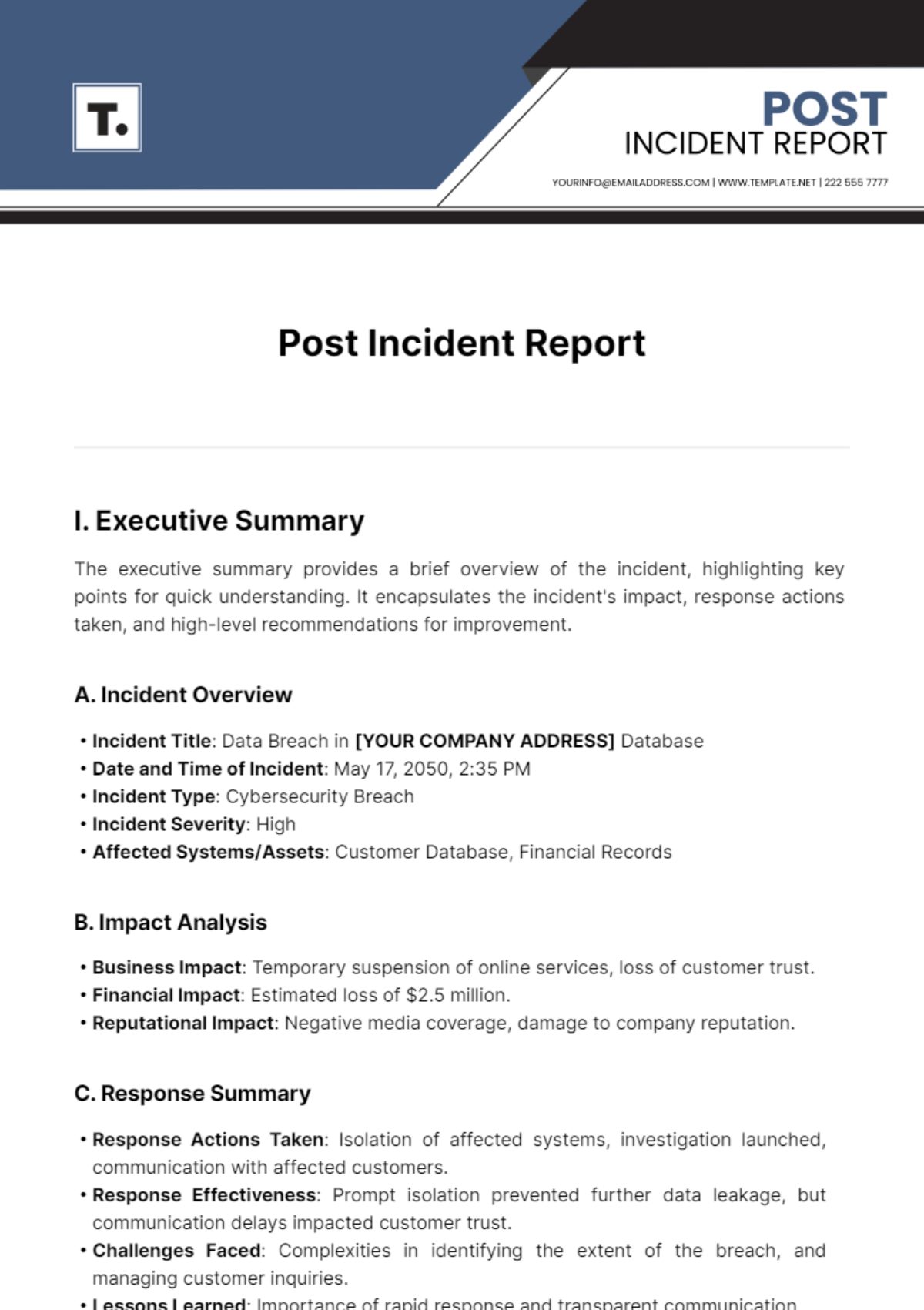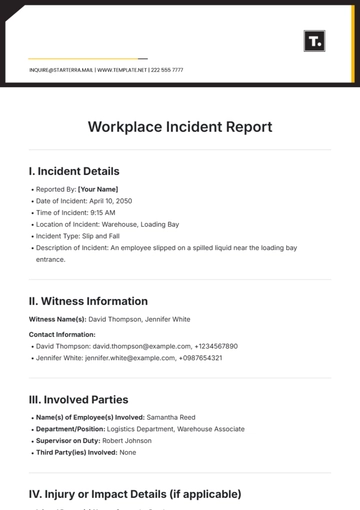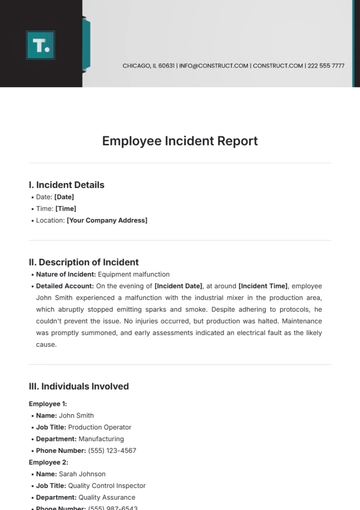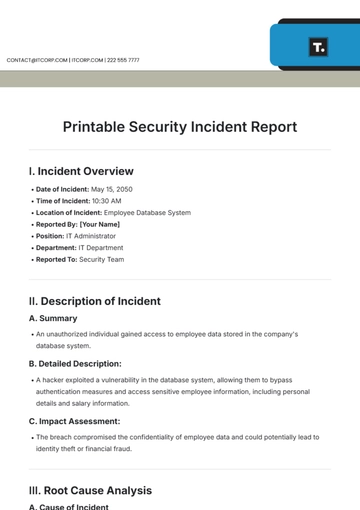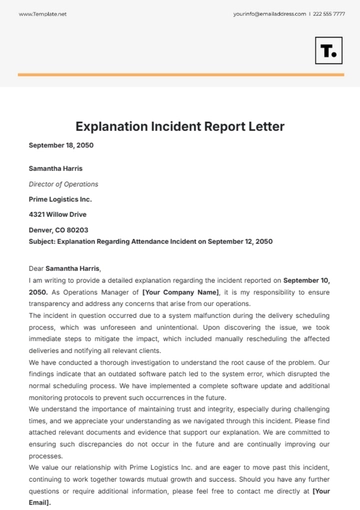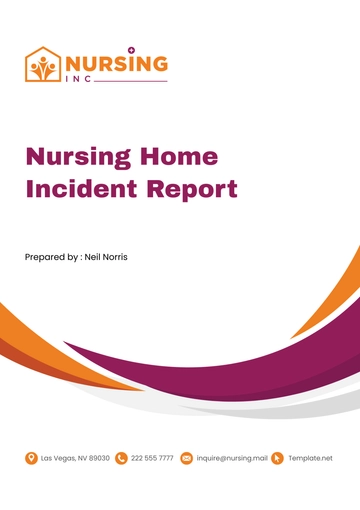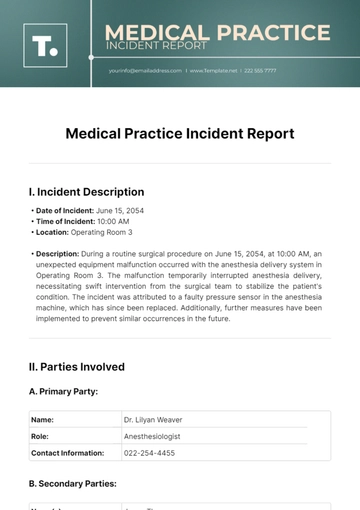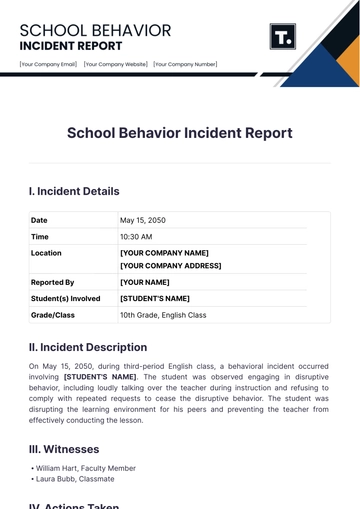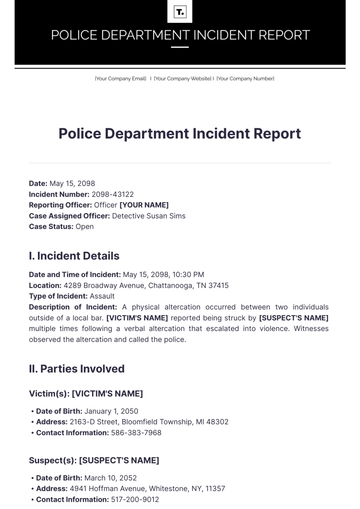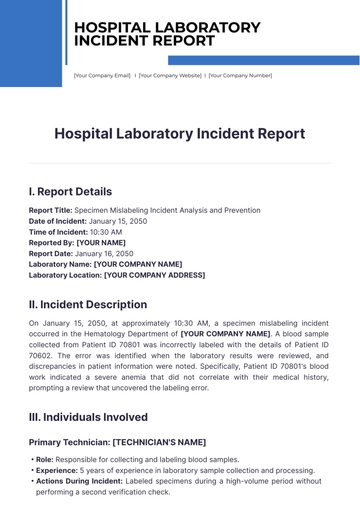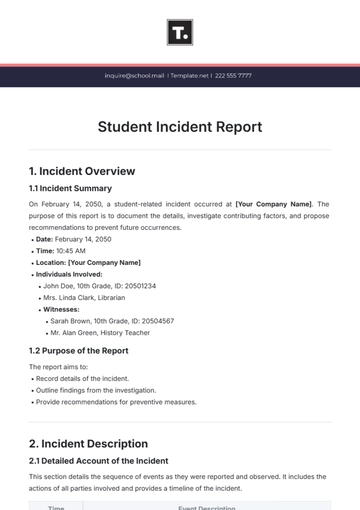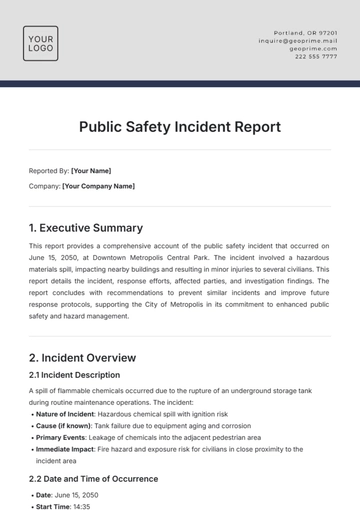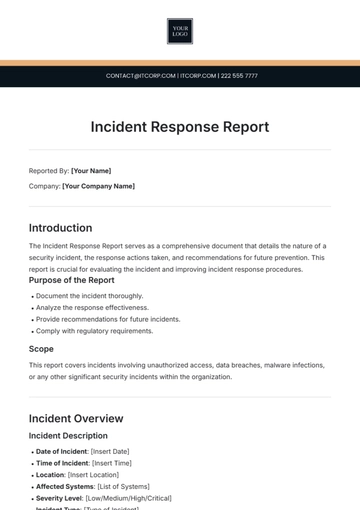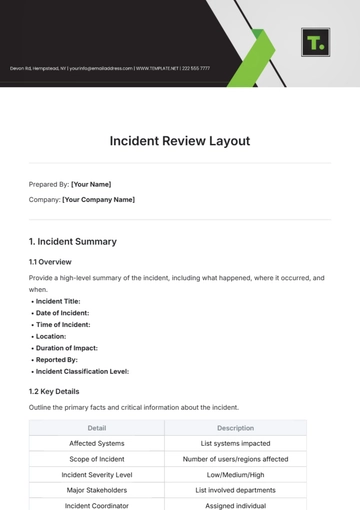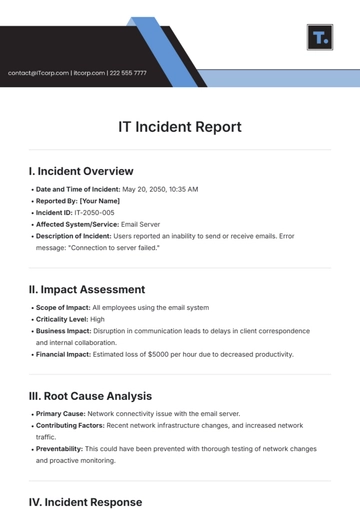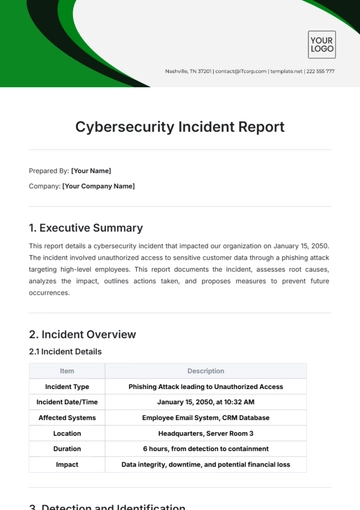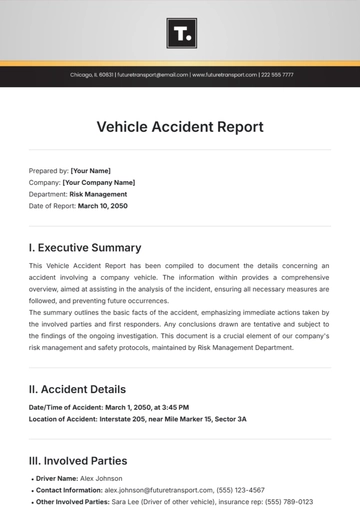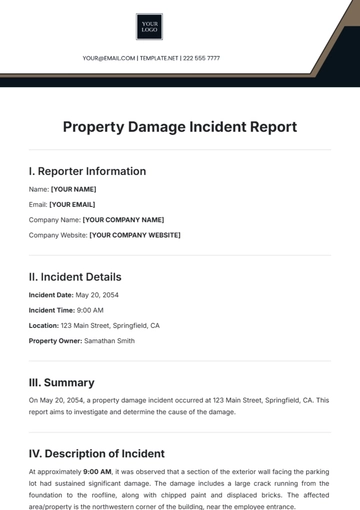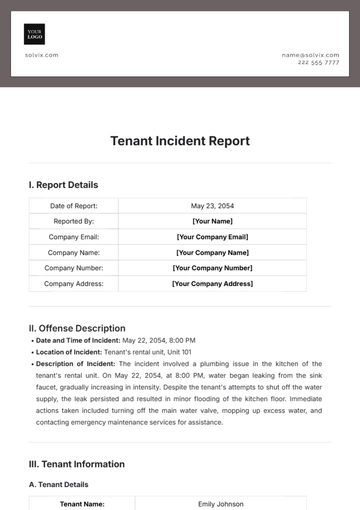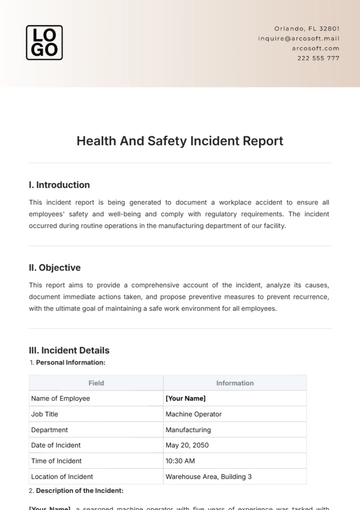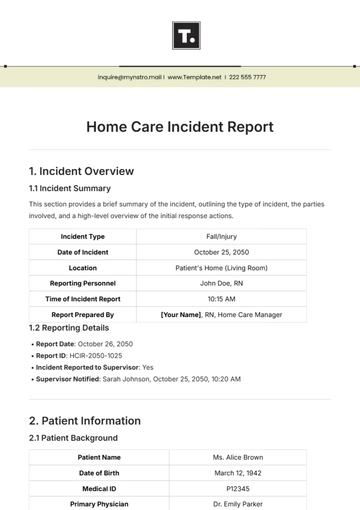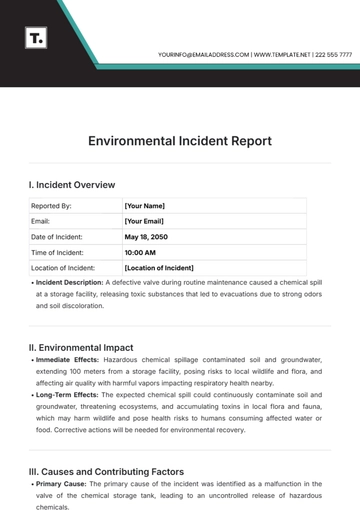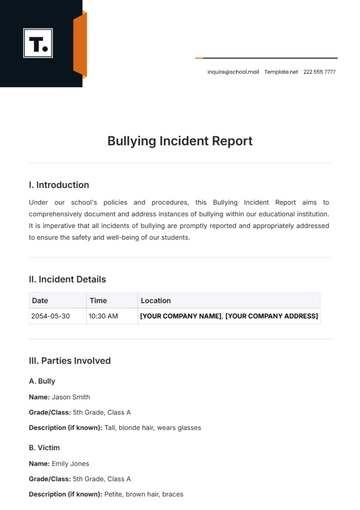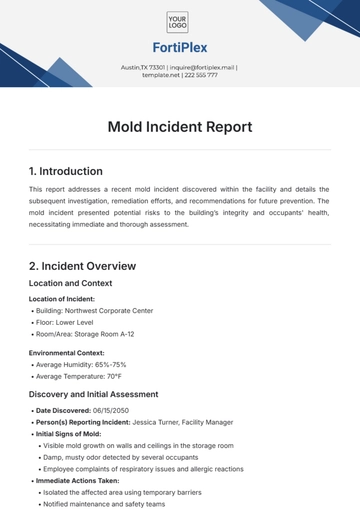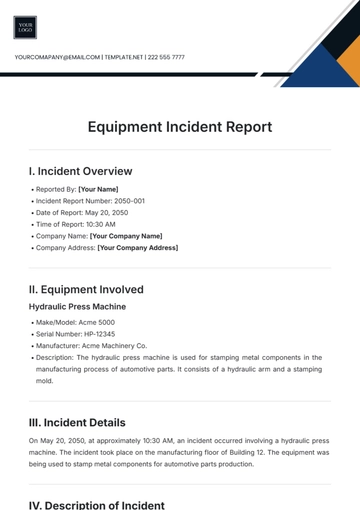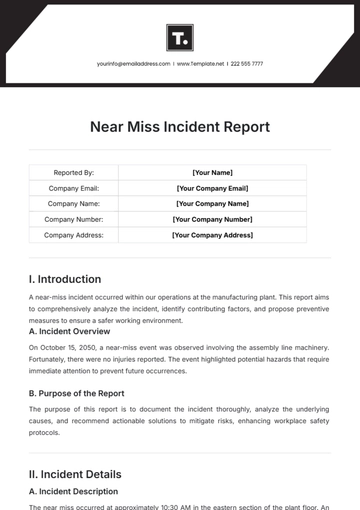Post Incident Report
I. Executive Summary
The executive summary provides a brief overview of the incident, highlighting key points for quick understanding. It encapsulates the incident's impact, response actions taken, and high-level recommendations for improvement.
A. Incident Overview
Incident Title: Data Breach in [YOUR COMPANY ADDRESS] Database
Date and Time of Incident: May 17, 2050, 2:35 PM
Incident Type: Cybersecurity Breach
Incident Severity: High
Affected Systems/Assets: Customer Database, Financial Records
B. Impact Analysis
Business Impact: Temporary suspension of online services, loss of customer trust.
Financial Impact: Estimated loss of $2.5 million.
Reputational Impact: Negative media coverage, damage to company reputation.
C. Response Summary
Response Actions Taken: Isolation of affected systems, investigation launched, communication with affected customers.
Response Effectiveness: Prompt isolation prevented further data leakage, but communication delays impacted customer trust.
Challenges Faced: Complexities in identifying the extent of the breach, and managing customer inquiries.
Lessons Learned: Importance of rapid response and transparent communication.
D. Recommendations
Preventive Measures: Implement stronger encryption protocols, and regular security audits.
Process Improvements: Streamline incident response communication channels.
Training Needs: Enhance staff training on incident response protocols.
II. Incident Details
This section provides a detailed examination of the incident, outlining its timeline from detection to resolution, identifying root causes such as vulnerabilities or human error, and elucidating technical details regarding the nature of the attack, including methods employed by the threat actor and exploited weaknesses in the system.
A. Incident Timeline
The sequence of Events: Unauthorized access was detected during a routine security audit, and an investigation was initiated immediately.
Detection Time: May 17, 2050, 1:45 PM
Containment Time: May 17, 2050, 2:10 PM
Resolution Time: Ongoing investigation, expected resolution by May 20, 2050.
B. Root Cause Analysis
Primary Cause: Weakness in database encryption protocols.
Contributing Factors: Lack of regular security audits, and inadequate staff training.
C. Technical Details
Attack Vector: SQL injection via unpatched web application.
Exploited Vulnerabilities: Outdated database software, weak password policies.
Tools/Techniques Used: Automated scanning tools for reconnaissance, manual SQL injection.
III. Recommendations and Conclusion
This section provides detailed recommendations based on the analysis conducted, along with a concluding remark summarizing the key findings and implications for future incident management.
A. Recommendations for Improvement
Technical Controls: Upgrade database encryption, and implement multi-factor authentication.
Policy and Procedure Updates: Enforce regular security audits, and revise password management policies.
Incident Response Enhancements: Establish clear communication protocols, and conduct regular incident response drills.
B. Conclusion
In conclusion, this incident report highlights the critical importance of effective incident response and proactive measures to mitigate future risks. By implementing the recommended improvements and incorporating the lessons learned, [YOUR COMPANY ADDRESS] can strengthen its resilience and readiness in the face of similar incidents.
Report Prepared By: [YOUR NAME]
Position: Chief Information Security Officer
Date Report Prepared: May 20, 2050
Incident Report Templates @ Template.net
